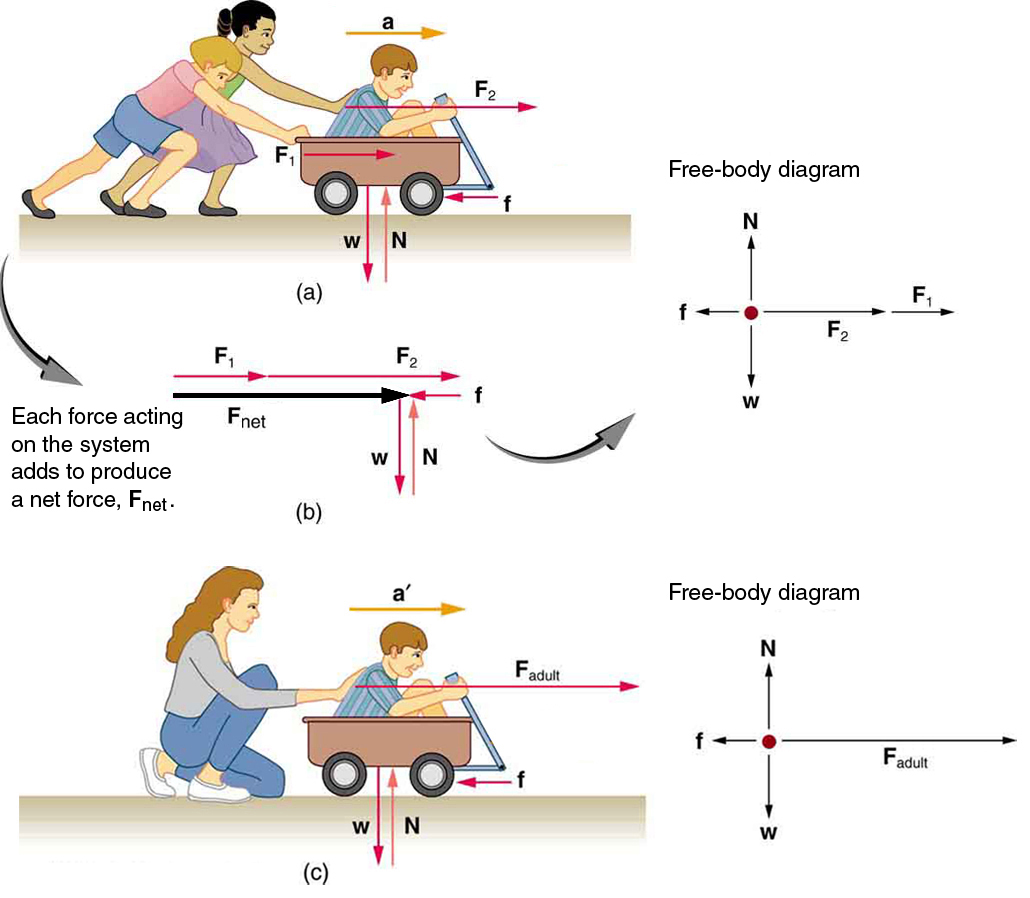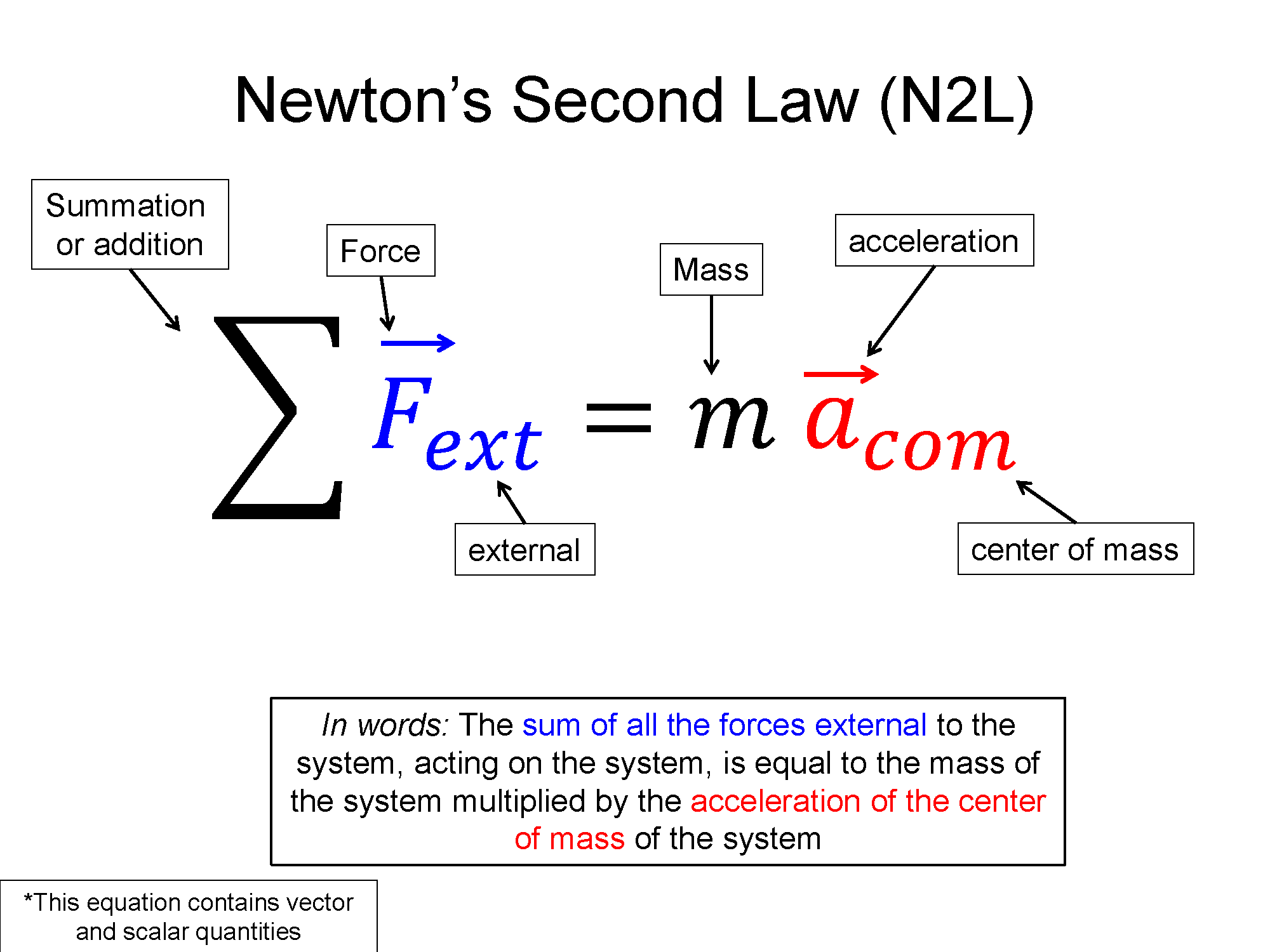Here's a demonstration and explanation of Newton's Second Law in space
Pre-lecture Study Resources
Read the BoxSand Introduction and watch the pre-lecture videos before doing the pre-lecture homework or attending class. If you have time, or would like more preparation, please read the OpenStax textbook and/or try the fundamental examples provided below.
BoxSand Introduction
Newton's Laws | Application of Newton's 2nd Law
Key Equations and Infographics


Now, take a look at the pre-lecture reading and videos below.
BoxSand Videos
Required Videos
Suggested Supplemental Videos
OpenStax Reading
Fundamental examples
Coming Soon!
Post-Lecture Study Resources
Use the supplemental resources below to support your post-lecture study.
Practice Problems
For additional practice problems and worked examples, visit the link below. If you've found example problems that you've used please help us out and submit them to the student contributed content section.
Additional Boxsand Study Resources
Additional BoxSand Study Resources
Learning Objectives
Summary
The objective is introduce Newton's laws and apply the fundamentals of a force analysis. Specifically we focus on drawing free-body diagrams to facilitate translating the 2nd law to the mathematical representation. Connections to kinematics are also made.
Atomistic Goals
Students will be able to...
- Demonstrate the fact that a force is inherently an interaction between two objects or two systems.
- Explain Newton's 1st law as it relates to inertia.
- Explain Newton's 1st law and how it relates to the 2nd law.
- Define static and dynamic equilibrium.
- Explain Newton's 2nd Law.
- Explain Newton's 3rd Law force pairs.
- Define the point particle model
- Define a system(s) boundary and adhere their analysis to that boundary(s).
- Identify the type of forces interacting with your system and the direction they are applied.
- Differentiate between contact and non-contact forces.
- Demonstrate that the normal force is always perpendicular to the surface
- Draw a free-body-diagram (FBD) for the system(s).
- Demonstrate the ability to draw a properly scaled FBD.
- Draw the coordinate system that reduces the complexity of the vector analysis next to the FBD.
- Apply geometry to determine appropriate angles for the given coordinate system.
- Find the components of a force in the chosen coordinate system.
- Differentiate between A force and a NET force.
- Apply Newton's 2nd law in the mathematical representation.
- Differentiate between static and dynamic equilibrium.
- Differentiate between weight and apparent weight.
- Synthesize a force and kinematics analysis via the acceleration.
- Demonstrate that the net force points in the same direction as the acceleration
- Demonstrate the fact that the net force can be in the opposite direction of the motion.
YouTube Videos
Simulations
Demos
History
Oh no, we haven't been able to write up a history overview for this topic. If you'd like to contribute, contact the director of BoxSand, KC Walsh (walshke@oregonstate.edu).
Physics Fun
Oh no, we haven't been able to post any fun stuff for this topic yet. If you have any fun physics videos or webpages for this topic, send them to the director of BoxSand, KC Walsh (walshke@oregonstate.edu).
Other Resources
Here is a concise explanation of Newton's Second Law:
Here is a PhET simulation relating force and motion:
Another simple tool to look at forces and acceleration by PhET. This simulation uses FBD on the right, make sure you are familiar with that tool. It might be best to turn friction off initially:
(requires download)
For additional simulations on this subject, visit the simulations repository.
Problem Solving Guide
Use the Tips and Tricks below to support your post-lecture study.
Assumptions
The thing that connects force analysis (Free-Body Diagrams) and motion analysis (kinematics, and other stuff we’ll learn later!) is the 2nd law. As such, now that you’re getting good at this, your first thought after drawing a free-body diagram should be to sum the forces in the x and y directions (after considering your coordinate axes).
The flow of solving a problem that needs motional analysis to come from a forces analysis start (one of the more common, and complicated question types we frequently ask) should look like:
1) Draw a free body diagram
2) Count knowns and unknowns in kinematics (you will often be missing 1, often acceleration)
3) Sum the forces in the x and y directions (usually you will want to tilt your axes if you aren’t accelerating in one of those directions, so that you are).
4) Set the sum of forces equal to mass times acceleration (consider if acceleration in that direction is 0).
5) Solve for acceleration in the system of equations generated by summing the forces in the x and y direction.
6) Use the acceleration you found to finish the problem with kinematics.
This type of problem is one of the hardest and most all-encompassing that can be asked of students thus far. Many problems may only require some of these steps, but having this work flow in your head will stop you from freezing and not knowing what to do part way through.
Checklist
Misconceptions & Mistakes
- Oftentimes in physics the angle given is not the angle you need to use in the problem. Do not assume, check the angle is correct, especially on exams.
- Position and velocity have no bearing on acceleration, which takes its cues from forces on the system. Forces tell objects how to accelerate, acceleration tells velocity how to change, velocity tells position how to change. Acceleration is the ultimate root of motion, brought about by force interactions.
Pro Tips
- Whenever you're given a graph, your first reaction should be to check the axes for what quantities AND units are being graphed. Then try to figure out relationships like what the area under that graph and what the slope of that graph mean.
- Often times the overall processes in physics problems are very similar, just the list of assumptions and conditions of each problem are different. Upon completion of a problem, take a few seconds to talk yourself through what steps you can define in each probelm. This will help you recall what you did later more effectively, but also really breakdown what the problem solving processes looks like in your own words, which naturally will be the way that makes the most sense to you.
Multiple Representations
Multiple Representations is the concept that a physical phenomena can be expressed in different ways.
Physical

Mathematical
The main mathematical representation for forces will be applying Newton's Second Law to a physical problem. You will need to analyze the motion of an object and create a free body diagram of the relative forces in order to derive the force equations. We learned in the kinematics section how to analyze motion without any concern about the forces that caused the motion. The infographic below describes the relationship between force and acceleration. Thus, we may now analyze the forces acting on an object to determine the relative acceleration.

Graphical
 .
.
Descriptive
A spaceship, deep in space, has ran out of fuel. Since nothing is there to act on the ship, it will continue to move at the speed it is moving and in the direction it is moving. It will do this until something acts on it, something like the pull from a nearby star that becomes no longer negligible as the ship passes near the star.
Experimental
